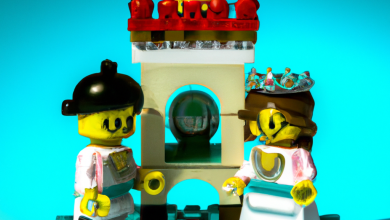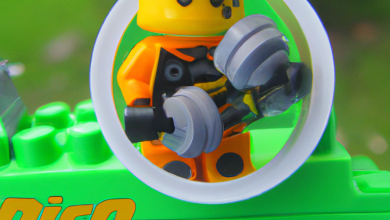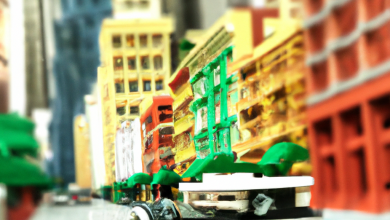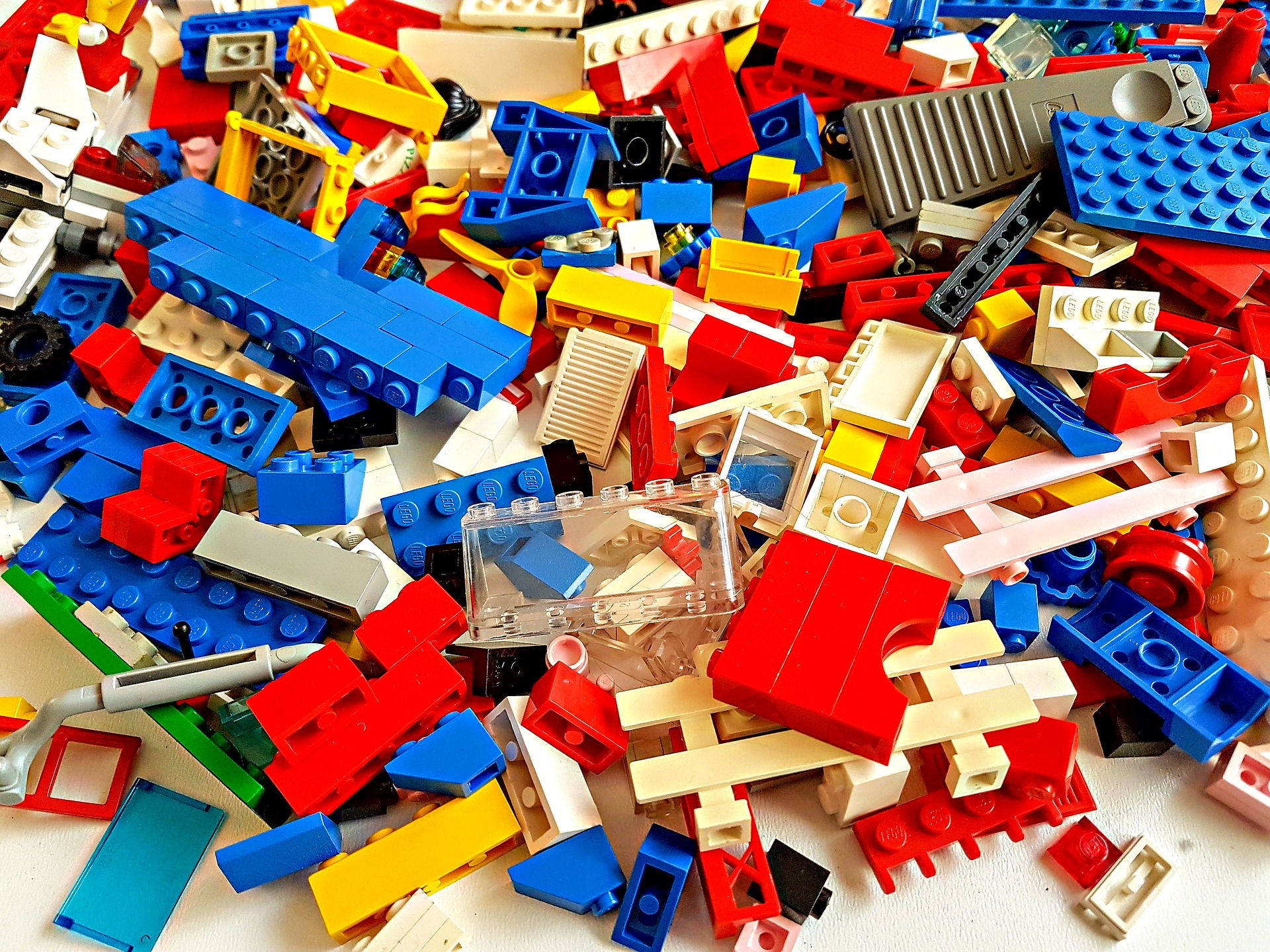
I. Introduction
Lego building blocks have been around for over 80 years, yet they continue to captivate the hearts and minds of both children and adults. These plastic blocks are not just toy blocks, but rather a platform for creativity and imagination. A simple set of Lego bricks can provide hours of entertainment, learning, and achievements, making it one of the most popular toys in the world.
Explanation of Lego:
Lego is a line of construction toys that consist of interlocking plastic bricks and other accessories, such as gears, wheels, and figures. The word Lego comes from the Danish word “leg godt,” which means “play well.” The Lego Group, a privately held company based in Denmark, started manufacturing these plastic blocks in 1949. Since then, it has become one of the largest toy manufacturers in the world, with billions of Lego bricks sold annually.
Why Legos are so popular:
Legos are popular for several reasons. First, they are simple yet versatile toys that can allow children to create anything they can imagine. Second, they encourage children to think creatively and learn how to solve problems. Third, they help improve children’s fine motor skills by requiring them to manipulate small objects. Fourth, they allow for endless possibilities for individual and collaborative play. Lastly, Legos are timeless, and they have remained popular throughout the years, with new models and themes constantly being introduced.
Brief history of Legos:
Ole Kirk Christiansen, a master carpenter from Denmark, founded Lego in 1932. Initially, the company produced wooden toys, with “Lego” being the name of one of the products. In 1949, the company started producing the plastic Lego bricks we know today. The bricks gained immense popularity, and the company released its first themed sets, including a train set, a town set, and a farm set, in the early 1960s. Since then, the company has grown exponentially, with new models and themes constantly being introduced. Lego has also expanded into movies, video games, and theme parks, solidifying its place in popular culture.
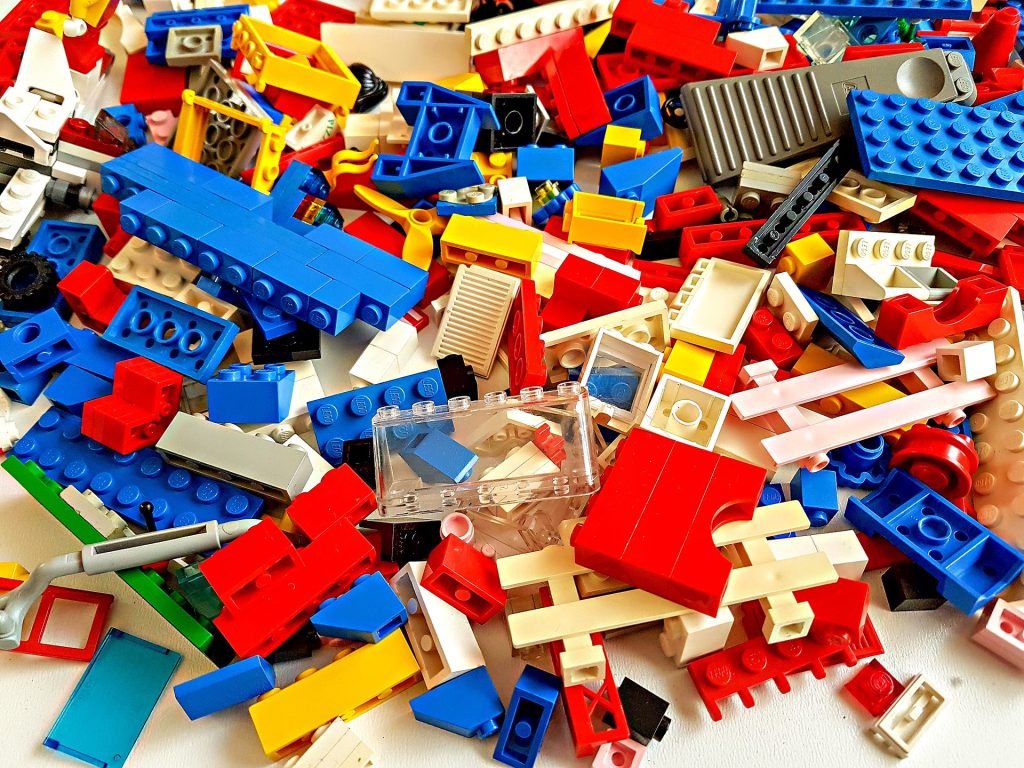
II. Benefits of Playing with Legos
Playing with Lego building blocks is an incredibly fun and engaging activity for children and adults. What many people don’t realize, however, is that playing with Legos also boasts a myriad of benefits for various aspects of development.
First and foremost, playing with Lego bricks is an excellent way to develop fine motor skills. The manipulation of the small pieces requires a steady hand, and the dexterity required to snap them together and take them apart is an excellent way to improve hand-eye coordination in both children and adults.
Lego play also encourages creativity and imagination. There are no set rules or limitations to what can be built, which allows for endless possibilities in terms of design and construction. This freedom inspires imagination and allows for personal expression, which is incredibly beneficial for the developing minds of children.
Lego building also enhances problem-solving and critical thinking skills. When faced with the challenge of constructing a complex design, builders must analyze and plan their construction. They must consider which pieces to use, how they fit together, and how to ensure stability and balance. This process involves both problem-solving and critical thinking, as builders must determine the best and most efficient ways to achieve their desired outcome.
Another significant benefit of playing with Legos is that it increases patience and perseverance. Building a complex construction often requires time and effort, and success isn’t always immediate. As this occurs, young children develop patience and learn to persevere through difficulties, boosting their resilience and grit over time.
Finally, Lego play develops social skills. Playing with Lego bricks can be a social activity that encourages teamwork and communication. When building projects with others, children not only learn cooperation and collaboration but also practice communication skills with their peers. Builders must share their ideas and listen to others for the construction to be successful, ultimately enhancing their social skills.
Overall, playing with Lego bricks helps with fine motor skills, creativity, problem-solving, patience, perseverance, and social skills. This diverse set of benefits means that Lego building blocks are more than just toys- they are an excellent way for both children and adults to learn and grow in new and exciting ways.
III. Types of Lego Sets
One of the reasons why Lego has remained popular for decades is the vast number of types of sets that have been produced. Here are some of the most popular types of sets:
1. Classic Sets – These sets contain a variety of basic bricks and elements that allow kids to free-build whatever they imagine. It’s ideal for kids who want to create their own designs and use their creativity. Classic sets are also perfect for those who are new to Lego since they can get a sense of how the different bricks work together.
2. Themed Sets – These sets bring to life beloved characters and locations from popular franchises like Star Wars, Harry Potter, and Marvel. You can build Star Wars Millennium Falcon or Hogwarts Castle, which makes it more fun, and fans can live out their dreams-or create new ones.
3. Technic Sets – These sets are more geared towards older kids and adults since they offer more complex building techniques. Technic sets typically include gears, axles, and other mechanical elements that can be used to create moving parts.
4. Mindstorm Sets – These sets involve more sophisticated programming that allow builders to create robots and other complex machines. Mindstorm sets include servo motors, sensors, and software that enables builders to program their creation to do specific tasks.
The great thing about various Lego sets is that there is something for everyone in every age group. For instance, Classic sets are the most accessible to beginners and younger kids, but they can be just as fun and creative for adults. The themed sets, meanwhile, offer fans the opportunity to build things from their favorite movies, books, or video games, but these sets can also be very accessible to people who just want to build something fun or cute.
Moreover, Technic sets offer a high-level challenge and a deeper understanding of mechanisms. Similarly, Mindstorm sets are suitable for those who want to try out coding and mechanical programming, and want to create their own robots.
Lego offers a myriad of sets for every type of builder at different skill levels, which is one of the reasons why it has remained one of the most popular toys in the world. There is always something new to explore with Lego sets, and the possibilities that come with the different types of sets are truly endless.
IV. Building Techniques with Legos
Lego building is an incredibly versatile and creative activity, and there are many different techniques for building with Legos. Here are some of the most popular techniques and styles of Lego building.
1. Basic Brick Building
This is the most fundamental technique for building with Legos. It involves stacking bricks on top of each other to create whatever you want. One of the great things about Lego bricks is that they can be used in a wide variety of ways, so the possibilities for basic brick building are endless. However, to build more complex and impressive creations, it is often necessary to utilize other techniques as well.
2. SNOT (Studs Not On Top) Techniques
SNOT, or Studs Not On Top, is a technique that involves placing Lego bricks on their sides, rather than on top of each other. This technique allows you to create smoother surfaces and more intricate designs by using the sides of the bricks to create interesting angles and shapes. SNOT is an advanced technique and may require some experimentation, but it is a very useful skill to have in your Lego-building toolbox.
3. Microscale Building
Microscale building is a technique that involves building in a much smaller scale than normal. This technique is great for creating miniatures, models, and landscapes. Microscale building requires a lot of precision and attention to detail, so it is definitely an advanced technique. But once you master it, the results can be truly incredible.
4. Mosaic Building
Mosaic building is a technique that involves creating a picture or design out of small Lego pieces. This technique is particularly good for creating pixel art, and it can be a great way to express your creativity without having to build something in three dimensions. Mosaic building can be challenging and time-consuming, but the end result can be very satisfying.
5. Sculpture Building
Sculpture building is a type of Lego building that involves creating three-dimensional forms, like animals or people. This technique requires a lot of attention to detail and can be quite challenging, but it is incredibly rewarding when you finally finish your creation. Sculpture building also requires some knowledge of anatomy and structure, which can make it a great learning opportunity for kids and adults alike.
Overall, there are many different techniques to choose from when it comes to building with Legos. Each technique requires different skills and levels of experience, so don’t be afraid to experiment and try new things. With practice, you can become a master Lego builder and create amazing things that will inspire and impress anyone who sees them.
V. Collaborative Lego Building
Collaborative Lego building is a great way to not only enjoy building with others but also to learn valuable skills. Building together can help develop teamwork, communication, and problem-solving skills. Collaborative building can be done in several different ways, from informal sessions at home with family and friends to larger organized events like Lego clubs and competitions.
One of the main benefits of collaborative building is the opportunity to bounce ideas off of others. It can be helpful to have a second or third set of eyes when working on a complex building project. When building with others, different perspectives and ideas can make the building process more enjoyable and lead to more creative builds.
Group building challenges are another way to build collaboratively. Challenges can range from building a specific object or character to building a structure with specific parameters like size limitations or color schemes. These challenges can be great for encouraging creativity and pushing builders to think outside of the box. They can also be a fun way to compete with others, whether it’s with friends or in a larger event.
Lego clubs and events are a great way to connect with other Lego enthusiasts and collaborate on building projects. These clubs often organize events and competitions, which provide opportunities for builders to showcase their skills, get feedback, and learn from others. In addition to building opportunities, Lego clubs often have a social aspect, as members share their love of Legos with others.
Collaborative building can also have a positive impact beyond the building itself. Legos can be used in school programs and workshops to teach valuable skills like STEM concepts, problem-solving, and teamwork. Legos can also be used for charity events and social causes, as they can be used to create awareness-raising installations or auctioned to raise funds for a good cause.
In conclusion, collaborative Lego building provides benefits beyond the immediate fun and enjoyment of building with others. Collaborative building can help develop teamwork, communication, and problem-solving skills, along with being a fun and rewarding experience. With the increasing popularity of Lego clubs and events, there are more opportunities than ever before to explore the world of collaborative Lego building.
VI. Beyond Building: Other Creative Uses for Legos
Legos are not just building blocks anymore, as there are many other creative uses for them beyond building. Here are four exciting ways to incorporate Lego pieces into other forms of art and design:
Stop-Motion Animation:
Lego stop-motion animation, also known as “brickfilms,” has become popular in recent years. Using a camera and computer software, you can create amazing animated videos featuring Lego minifigures and sets. Stop-motion animation has become so popular that Lego even released a stop-motion animation app, called Lego Movie Maker.
Interactive Art Installations:
Art installations made entirely out of Legos are gaining popularity around the world. These interactive exhibitions allow visitors to contribute to the art by building pieces themselves. Lego art installations can be found in museums, public spaces, and even airports worldwide.
Furniture and Home Decor:
In addition to traditional building, Lego bricks can also be used to create unique furniture pieces and home decor. Some designers have created Lego coffee tables, shelves, lampshades, and even beds. These pieces are not only fun and whimsical, but they also add a touch of playfulness to any room.
Jewelry and Accessories:
Lego jewelry and accessories are another creative way to incorporate Lego pieces into your life. From necklaces and bracelets to earrings and cufflinks, there are endless possibilities for Lego-inspired jewelry. There are many online marketplaces, like Etsy, where artists sell unique Lego-based jewelry and accessories.
Overall, Lego building blocks are an incredibly versatile tool for artistic expression, used by both kids and adults alike. Whether it’s building sets, stop-motion animation, interactive art installations, or home decor, Legos continue to inspire creativity and imagination in people of all ages. Furthermore, these alternative uses for Legos demonstrate that there’s no limit to what you can create with this classic toy.
VII. Conclusion
In conclusion, it is clear that Lego Building Blocks are not just child’s play. From enhancing fine motor skills, encouraging creativity and imagination, and developing problem-solving and critical thinking skills to helping increase patience and perseverance and building social skills, Lego sets have become the ultimate creative tools for kids and adults alike.
There are various types of Lego sets available for consumers, including classic sets, themed sets, Technic sets, and Mindstorm sets, each providing a different level of complexity and building experience.
Moreover, building techniques with Lego blocks are all about imagination and inspiration, from basic brick building to SNOT techniques and sculpture building. Young and old alike can immerse themselves in building, experimenting, and creating something unique.
Beyond building, there are other creative ways to use Lego blocks. Whether it’s stop-motion animation, interactive art installations, furniture and home decor, or jewelry and accessories, the possibilities are endless.
Collaborative building adds yet another layer of excitement and learning to Lego building sets. Teaming up with friends, family, or Lego clubs and events can help build teamwork skills and challenge builders to think outside the box.
With new technology constantly advancing, the future of Lego Building sets is bright. In fact, the company has already launched initiatives like Lego Education and Lego Ideas, which encourage students and enthusiasts to create and share their designs.
In conclusion, Lego Building blocks are more than just toys. They are tools to inspire creativity, imagination, and critical thinking skills. The benefits of playing with Legos are invaluable, and there are endless ways to use and enjoy these blocks. So, whether you are a child or an adult, explore and experiment with Legos, and join the millions worldwide who delight in the joy of Lego building.
